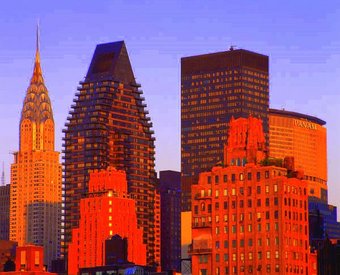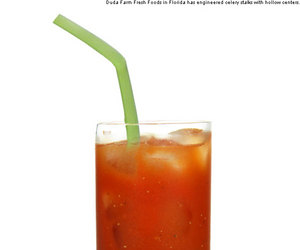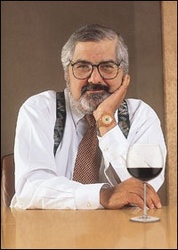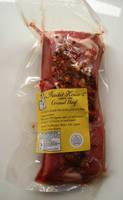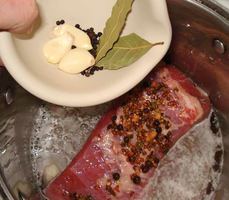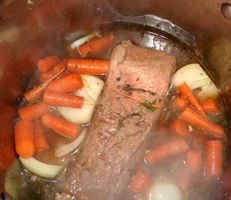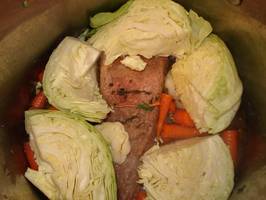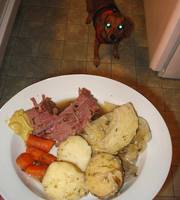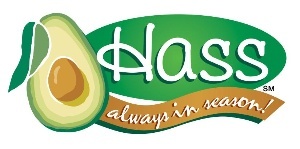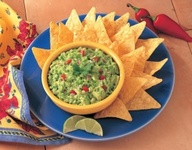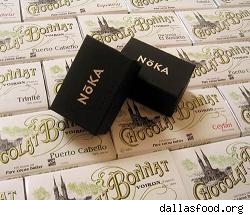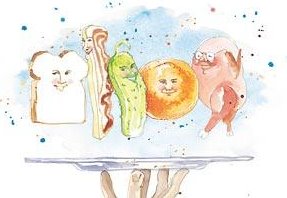January 30, 2007
Why we drink wine
Mike Steinberger writes about wine for Slate.com. His column last week recounted drinking a $700 bottle of 1996 Corton-Charlemagne from Coche-Dury; it's a perfect explanation of wine's seductive appeal...of wine in general and of this bottle in particular.
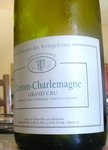
The hill of Corton, just outside Beaune, Corton-Charlemagne from Domaine Senard.
Steinberger's not alone in his enthusiasm; Robert Parker's a fan as well. So is Cornichon; we've had the good fortune of tasting several superb Corton-Charlemagnes in recent times from growers as different as Domaine Senard, Louis Jadot, Louis Latour and Bonneau du Martray.
Corton-Charlemagne's stony limestone vineyards cover 72 hectares, over 180 acres, making it the largest white-wine grand cru appellation in Burgundy. (Fewer than 40 vineyards, representing just 2% of Burgundy's acreage, have been designated grand cru.) The growers and merchants fortunate enough to own vines in Corton-Charlemagne will vinify a total of about 300,000 bottles a year. It's not so much a rare wine like Romanée-Conti (1.8 hectares, a bit more than 4 acres, producing 6,000 bottles) as a truly great one.
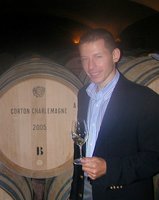
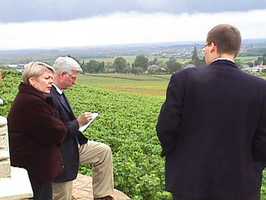
Antony Ravat at Maison Louis Jadot, named best young sommelier of France in 1999;
Louis Latour vineyards in Corton-Charlemagne.
So what can you expect for your $700? Steinberger quotes his own tasting notes: "What a nose--hazelnut, oatmeal, sweet white fruit, smoke, spice, and a touch of nutmeg. Stirring nose. Ripe, spicy, sublime, succulent grapefruit, pear. Perfect balance. Holy shit." That was just the teaser, though. When he tastes it, over dinner at an unassuming restaurant outside Paris, this reaction: "On the palate, the wine had a rich, oily texture and a Platonic balance of fruit and acidity, all backed by a steel rod of minerality. Think of your favorite painting, or favorite novel, or favorite piece of music--this was it in liquid form."
That's what wine's all about--why we tolerate the bafflement of friends, the disappointment of poor vintages, the torment of indifferent service and the frustration of inferior bottles--because we have faith that now and again, with the clarity of a religious vision, we will encounter perfection.
January 29, 2007
Portland by wire
You'd think it was the Second Coming or something. TV news shots, front page of the local dailies, big story in the New York Times. It's a freaking ski lift, for chrissakes. You get on, you ride in a gondola for five minutes, you get off at the top. But it's in Portland, you know, so it's got to be terrific. Even Amy Jenniges, former Stranger staffer now at the Portland Mercury, thinks it's hot shit. What are they calling it? An icon for the Rose City? Like the Eiffel Tower?
The Portland tram cost 60 million or so, about what the Sculpture Park cost, give or take. If we built a gizmo like that here, it could go from the Pig at the Market to the top of the Space Needle, same distance up and across. Whee! With a ride like that, we wouldn't need the monorail, either. Oh, wait...we already have the monorail.
Footnote, as it were: the base if the tram is in a "neighborhood" officially called South Waterfront. Portlanders refer to it as So-What.
January 26, 2007
Top Barman
February 3rd UPDATE: Gal waits at ZigZag while her date gets mugged, off-duty cop shoots robber.
Ask anyone who's serious about cocktails, and they'll tell you that Murray Stenson at ZigZag is Seattle's best barman. Knows his drinks, knows and remembers his customers. I was hooked from hello on my first visit. Murray introduced me to cask-strength Macallan's, Hendrick's gin, super-premium vodkas. He works fast (not for nothing is he called Murr the Blur) but never seems rushed; he dips a straw and tastes a drop of virtually every drink before it's delivered to the customer.
Back in May, Esquire named ZigZag one of the best bars in America. Now Playboy has discovered Murray, naming him one of the top ten bartenders in the country. ZigZag's owners Kasey Fitch and Ben Dougherty are thrilled. So are regulars like Charles, whose namesake Chas cocktail is now part of ZigZag's drink menu.
Notes Robert Hess, Seattle-based cocktail guru, "It wasn't that long ago that people thought good coffee came from a can, or good beer came from large commercial breweries. Perceptions change, fortunately. And now we have our own Murray Stenson showing us that good cocktails can also be a thing of beauty."
ZigZag Café, 1501 Western Ave., 206-625-1146 ![]()
January 25, 2007
Noo Yawk, Noo Yawk
Read all about it! Celebrity chefs and pretentious wannabes run amok in La Grosse Pomme, get skewered by usually-quite-stodgy New York Times resto critic Frank Bruni. Read all about it!
Not since Gael Greene published parallel views of Le Cirque (contrasting the exquisite food and fawning service when she showed up as her glamorous self with what she received disguised as an out-of-town shlub) have Manhattan's insular kitchens felt this much heat. Mind you, you may have to register to read the full text; worth it, though: You May Kiss the Chef's Napkin Ring.
Good thing there's nothing like that in Seattle. Right?
January 16, 2007
French-Korean blends at Coupage
How funny: not one but two restaurants in Seattle with French-Asian fusion cuisine opened the same week. One's Qube, downtown, reviewed here the other day. The other's Coupage, in Madrona, where Drey's tanked but Supreme and Plenty flourished, right across the street from yet another French spot, Crémant. As coincidences go, this one's fortunate.
First, that enterprising Portland chef Thomas Hurley would even want to venture north of the Columbia. His hometown place, Hurley's, does well. But he's restless, wants to move out from behind the stove, likes it up here, and has found in Rachel Yang and Seif Chirchi two well-trained and reliable talents. (They met while working for Alain Ducasse in New York, became engaged, and wisely decided to move west.)
Second, that Madrona has turned into such a hotbed of culinary innovation. For much of the 25 years I lived in the hood, its most exciting flavor was JuicyFruit at the minimart. Now there's half a dozen "destination" restaurants at 34th & Union alone. But only one with the smokey, slow-cooked flavors of a traditional Korean kitchen.
You might start with a salad of mâche and smoked maitake mushrooms, or arctic char that's been smoked over pine needles. Follow that with braised short rib, garnished with home-made kimchi and served atop a chestnut polenta. Or a crunchy slab of pork belly on a pilaf of fragrant Asian lentils.
Then again, you might prefer to skip the unappetizing "salmon wings" served with buffalo-style bleu cheese and celery. The vichyssoise sported a scrumptious crabcake at its center but lacked the promised punch of lemongrass. More than once, I had the feeling that Yang was holding something back. Seattle's got plenty of places doing perfectly grilled tuna and rack of lamb; what our jaded foodie community wants is spicy, new, unusual, challenging, even weird, wacky and slightly bizarre. So, s'il vous plaît, juseyo, feel free to go crazy back there! And, hey, order the damn salmon wings if you feel like it.
Coupage, "blending" in French, is not always meant as a compliment. Hurley, on the other hand, means well. There's every reason to believe Coupage will rise to the expectations of its most demanding customers.
![]() Coupage, 1404 34th Avenue, Seattle. 206-322-1974
Coupage, 1404 34th Avenue, Seattle. 206-322-1974
January 15, 2007
Operatic consequences

Morgan Smith goes down as Don Giovanni. Seattle Opera photo by Rozarii Lynch.
Here's a 220-year-old opera whose anti-hero exhibits reckless behavior and cynical indifference to real-world consequences. (Sound like the current resident of 1600 Pennsylvania Avenue?) Yet the "moral" that's tacked on to Don Giovanni, that he who lives a wicked life dies a wicked death, is a sham; it's delivered by the opera's six suvivors as a tacked-on ending, in the theatrical equivalent of a wink-wink, with house lights up.
Yes, the Don goes to hell (convincingly staged, by the way, with trap door, "flames," smoke, screams), but his nominal victims deserve no better. Donna Anna hypocritically demands revenge for her father's death, conveniently forgetting that it was her own indiscretion with Giovanni that precipitated the Commendatore's ill-fated defense of her virtue. "Whatever you say, dear," is the in-denial response from her fiancé, Don Ottavio. The peasant-girl Zerlina deliberately cavorts with Giovanni to provoke Masetto's ire and ensure herself of punishment. The "wronged" Donna Elvira is both enthralled and repelled by her attraction to Giovanni; after he's gone she dreamily wraps herself in his cape. And Leperello, Giovanni's Fox News enabler, literally feeds off his amorality. There's no hint of judgment about their fates.
Seattle Opera's "gold" cast featured Mariusz Kwiecin as a suave and courtly Giovanni, but I found the smirky, smarmy edge of the "silver" star, Morgan Smith, more credible. The silver Anna, too, struck me as more vehemently angry, more visibly deranged. Used to be, the silvers sang in English; with supratitles, that's no longer necessary, and the current production's "second" cast is as strong as the first.
As an opera, Don Giovanni is both tapestry and mystery, interweaving the traditional story of the libertine (over 2,000 conquests!) who, by convention, must be punished, with the 18th Century's spirit of political Enlightenment (the rousing Act I "long live liberty!" finale). As art, Mozart's collaboration with Lorenzo da Ponte transcends mere entertainment; it asks fundamental questions about good and evil, sex and personal responsibility. Seattle Opera's updated, imaginatively staged production (by the stalwart team of Robert Dahlstrom and Chris Alexander), conducted by Andreas Mitisek (who led Cosi fan tutte here last year) enhances those mysteries with sublimely sung music. Even in today's nonjudgmental environment, that's a virtue.
Seattle Opera presents Don Giovanni through Jan. 27. Tickets online or call 206-389-7676
January 14, 2007
Charles goes a-forking
After 14 years as executive chef at Ray's Boathouse, Charles Ramseyer is leaving town. Bailing out. He's been recruited by celebrity restaurateur Jeffrey Chodorow (TV's The Restaurant) to open a new joint in Noo Yawk City called Wild Salmon. Opening day scheduled for April 6th. Charles says he's wants to bring the Pacific Northwest to Manhattan; meanwhile, he offers this advice to those he leaves behind:
January 13, 2007
Sliced, Diced & Qube'd
In the beginning, there was the whole bear, the whole goat, the whole hog. You caught it, you cooked it, you ate it. Civilization just meant you could roast smaller pieces and eat smaller chunks. By the 21st century, we've reached the ultimate indulgence: a whole meal of mini-portions.
Well, why the hell not? "All I want is one bite" has become a mantra. Followed by, "As long as it's a really delicious bite."
The danger would be a meal of fussy, self-important plates. At its best, however, at Michael Mina in San Francisco, the $88 prix fixe dinners feature multi-faceted courses (three kinds of noodles to complement a beef carpaccio, for example, or three takes on strawberry shortcake).
In Seattle, month-old Qube offers a similar concept, three-course "sets." For less than half San Francisco's price, and with the bonus of some distinctly Asian crunch.
Owners Fu Shen Chang (former GM of Typhoon) and his wife, Kerry Huang, both Taiwan natives, hired Lisa Nakamura (classically trained, three years at the French Laundry) to put together a menu that combines Far East flavors with French techniques.
Translating this to the plate, for "Qubed" set meals (vegetarian, seafood or meat), Nakamura has to come up with three unique items every time and she succeeds with verve and imagination: butternut squash is stuffed into a pastry, puréd into a soup with sesame goat cheese, battered and served as tempura. Duck seems easier: foie gras, roasted breast, and braised leg wrapped in a scallion crèpe. Chocolate mousse arrives in three colors; crème brûlée in flavors of vanilla, banana and chocolate.
All this would be murder on wine pairings but for the skillful selections of Jake Kosseff, who holds the title of America's best young sommelier and whose day job is still 500 feet west at Campagne. He has no fear of savory flavors and no preconceptions: sake, French sparklers, Austrian rieslings, Portuguese albariños, Canadian ice wines and vintage port all make appearances.
For its part, Nakamura's kitchen runs its self-imposed obstacle course with nary a false step. The wild mushroom medley was a particular delight, erasing the memory of a disappointing portobello and tofu "burger" that accompanied the aperitifs. There was a rumor Qube would drop its $15 cosmo, by the way, but it seems Cornichon's earlier review served only to draw the attention of free-spenders. Hey, whatever works.
Just remember that Qube has nothing to do with Q, a very short-lived lounge atop Queen Anne that never reopened after a holiday hiatus.
![]()
Qube, 1901 2nd Avenue, Seattle, 206-770-5888
January 12, 2007
Giada & Pietro Rabbit
Blizzard of food notes.
First, this programming note: tonight at 9 PM on Food Network, with three repeats over the weekend, Giada De Laurentiis visits Seattle's Kerry Sear of Cascadia (Cornichon's "Best Belltown Bar") for, among other things, Alpine Martinis. Recipe here.
Now...what a week for restaurant reviews. For once, four home runs.
Over at the Seattle Times, Nancy Leson lights into Barolo. Spoiler alert: sensitive Seattle readers may be shocked to find words like "inedible" and "sludgelike" in a restaurant review. Decisive, incisive writing. Pietro Rabbit indeed!

Over at the Post-Intelligencer, Rebeka Denn visits Cucina DeRa, comes away impressed only by its "cost-to-lackluster ratio."
Meanwhile, at Seattle Weekly, Seattle newcomer Jonathan Kauffman goes goat-hunting, actually finds a few authentic Mexican taquerias. Hey! There's goats all over Belltown, too Jonathan!
And at The Stranger, Angela Garbes delves deep into organ meats. Tongue, brains, guts. Yup, all edible, all delicious.
January 10, 2007
Eagle lands, swallows Needle
Not true! Sure, Alexander Calder's 39-foot painted steel Eagle is going to be Seattle's next icon, but from this angle it looks kind of like a puppy getting ready to nip at its master's trousers. Rivalry of middle-aged artworks: Eagle is 35, Needle's pushing 50.
Seattle Art Museum's Olympic Sculpture Park opens to the public Jan. 20th.
January 9, 2007
Vincisgrassi
Sounds like the title of an aria by Verdi or Bellini, doesn't it? (Imagine an evil basso singing "Nessun mangia!") But, hey, it's just noodles. And noodles can be very tasty, as we know. Still, these are special.
So, the background. Alfred, Prince of Windischgrätz, had a distinguished career as a general in the Austro-Hungarian army. At the end of the 18th century, he commanded the Marche region, south of the Po delta on Italy's eastern seabord, where a local chef created a multi-layered pasta dish in his honor, a variant on a local dish called Prinzgrassi. The original recipes called for various organ meats; today it's made with chicken livers or veal ragù. Over the years, tomatoes have found their way into the recipe alongside the bechamel sauce, and the spelling has evolved to vincisgrassi.
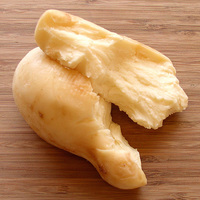
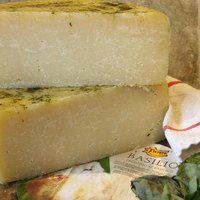
Vincisgrassi at Sorrentino; scamorza and pecorino cheese
It's the northern Italian flip side of lasagna al forno, Garfield's red-sauce, oven-baked favorite. (Remember those giant bricks of frozen lasagna at Costco? A $50 million a year business for Michael Angelo's Gourmet Foods until Costco started making its own about a year ago.)
Now, before you start sending in comments about your favorite recipe, remember that the word lasagna actually refers to the ceramic dish used for cooking, like pot-au-feu or Eintopf or, gee, "casserole."
One thing's for sure: a true vincisgrassi wouldn't use a "foreign" cheese like mozzarella, which comes from Naples. (Naples was literally a foreign country until Italian unification in 1861.) Ricotta, yes, that's as universal as cottage cheese. But in the north, cooks might also use a mild cow's milk cheese called stracchino, often melted atop pizzas. Even better, a "plastic" curd cheese called scamorza; like mozzarella, it's aged for a few days in the whey, then stretched and kneaded before molding. Smoked scamorza is even more flavorful and makes a lively complement to the traditional ingredients. Having developed the "hearty" vincisgrassi for La Vita è Bella, Enza Sorrentino uses pecorino and parmigiano for her milder version at her own place on Queen Anne.
Enza also makes a more traditional lasagna for Via Tribunale, a genuine Neapolitan pizzeria on Capitol Hill. They used to keep a sheet-pan of lasagna on hand for the occasional guest who wanted an alternative to pizza; since they switched to Enza's version, they're selling a dozen portions a night.
January 8, 2007
Things that suck, literally
How come we're not convinced this a good thing? Hollow swizzle sticks made out of genetically engineered celery, for the love of God. From Florida, as if we couldn't guess.
A Bloody Mary should help us recover from the night before, make us swear we'll never again drink Hennessey shooters (at least not that many, that early in the night), make us grateful for the restorative powers of tomato juice and vodka. Not weird us out. Is that too much to ask?
And, in keeping with the title of the post, here's another. Wine Spectator sends a fresh circular asking for renewals, etc. The latest, received yesterday, offers $25 off "Holiday Gift Subscriptions." In January. Marvin (yes you! in the photo on the right), were you thinking of the Islamic Day of Ashura, perhaps? Coming up on the 29th it is, sure to be a great market-expanding opportunity for the magazine, no?
Finally, it's time to suck it up! The infidels are pulling ahead! Remember, all ye loyal followers, ye can vote once every 24 hours for Cornichon in the poll for "Top Wine & Food Blog." Cornichon thanks ye all.
January 7, 2007
Hawks win, so where's the beef?
Three years after describing a pot-au-feu in Paris, Cornichon returns to the boiled brisket with this culinary dispatch from Alex Mayer, publisher of the Belltown Messenger.
Meantime, don't forget to cast your ballot for Cornichon.org in the voting for "Favorite Wine & Food Blog." You can vote once every 24 hours.
If there's one thing I'm good at it's cooking something to death, and I didn't disappoint fans of my slow simmered meat dishes this Saturday after they tasted my patented "Seahawks Playoff Good Luck Corned Beef Brisket."
I started at Seattle's Market House Corned beef, buying an 11 dollar, two pound brisket cut and shrink wrapped to order in conditions that would have horrified even the most desensitized health inspector. No matter - this thing would be slow simmered for a germ-killing four hours.
I filled my pot with water until the brisket was almost covered, then added some bay leaves, garlic and more peppercorns to the mix.
After three or so hours of cooking on low, with the lid on, in went a few onions and some carrots. And then some cabbage. Steamed some potatoes in a separate pot, with some parsley and butter. Served the whole deal with plenty of Gulden's mustard - this meal is the ultimate condiment vehicle, after all.
My guests are not picky, but hey - I could boil a leather shoe for four hours with some spices and it would probably turn out tender. In the end the Seahawks won the most exciting playoff game in their history, and my guests enjoyed a hearty meal. The brisket is a step up from the salty, pickled slabs of corned beef available at the supermarket, but still thousands of miles away from the Carnegie Deli.
Ronald adds: Don't forget to serve with plenty of cornichons!
January 6, 2007
The war on avocados
Two press releases have wafted through the series of tubes to the top of the spam heap this morning.
The first predicts that Americans will consume 50 million pounds of avocados while watching pro football on Big Game Day. (Note the careful avoidance of the politically charged term Superbowl.) A pound per person? That's a lot of guacamole! No wonder the average Seahawks fan weighs (almost) as much as Marcus Tubbs or Floyd Womack. Kidding! Kidding!!
On the other hand, it says in the second release, Seattle is one of two dozen metropolitan centers under scrutiny by an outfit called Research and Markets for clues about the future of suburban dining. Because, dontcha know, people who live in the sticks take their cues from what from us spoiled city slickers are picking at. Beyond that Applebee's in Auburn and Chili's in Issaquah lies a culinary wasteland needing corporate confirmation that they're actually serving up those avocados in Belltown. Green goo with salsa by the bucket at Mama's Mexican, sure, and a few stray avocado slivers in all those California rolls. But where's the avocado omelet? The avocado-bacon-tomato sandwich? The avocado burger? What's wrong with Belltown, anyway? The Hass people want to know!
January 4, 2007
How dark was my chocolate?
Blog called DallasFood is making big, brown waves with a ten-part (ten part!!) series about a small, Plano, Tex., chocolate-maker called NoKa. Point being, for starters, that NoKa's not a chocolate-maker per se but a chocolatier who purchases commercially packaged chocolate bars from a third party and uses them to make, or confect, a chocolate couverture. In installments of Dickensian intensity, DallasFood ferrets out the source of NoKa's chocolate: Bonnat, a respected firm based in the French Alps that actually processes beans from chocolate plantations in Africa, Asia and South America.
DallasFood's main point is that NoKa is charging a lot of money, between $300 and $2,000 a pound, for very little work (since when has that been a crime in Texas?), and misrepresenting its products besides (again, SOP for Texas). If only the same level of passionate, investigative journalism had been applied to the search for WMD!
Other blogs have chimed in, generally echoing DallasFood's shocked, shocked reaction. And a blogger who tried to defend NoKa turned out to be a flack. Some Texans, it seems, are as passionate about their chocolate as Cornichon is about salmon...or pizza.
Here in Seattle, we actually have the country's only independently owned, genuine bean-to-bar chocolate maker. That would be Theo's, in Fremont, where founder Joe Whinney and his team import organic, fair-trade cacao beans from Ghana, Ivory Coast, Madagascar and Venezuela, and sell 3-ounce, single-origin bars of chocolate (sweetened with organic Swedish sugar) for $5.25 to $6 apiece. Which works out to well under $100 a pound. Repeat after me: buy local, buy local, buy local!
January 2, 2007
Orangette gets juiced!
Was going to post about something else; it'll wait. Just got the news that fellow food-blogger Molly Wizenberg, by day a publicist at the UW Press, by night the creative genius behind the award-winning blog Orangette, has signed a contract with Simon & Schuster for a "narrative cookbook." Dream-come-true fantastic! Congratulations, Molly!
The deal is real enough for Molly (everyone calls her Molly) to give up her day job and plan to spend most of the coming year writing. Orangette and Cornichon were among half a dozen or so featured in a Seattle Times story about local food bloggers earlier this year, which explains, perhaps, why an orange and a pickle are sharing a platter in the illustration.
Orangette won "Best Overall Food Blog" in 2005, when the competition was run by another local blogger, Kate Hopkins of The Accidental Hedonist. This year's awards will be determined by a local advertising consortium called WellFed Network; nominees to be announced any day now.
